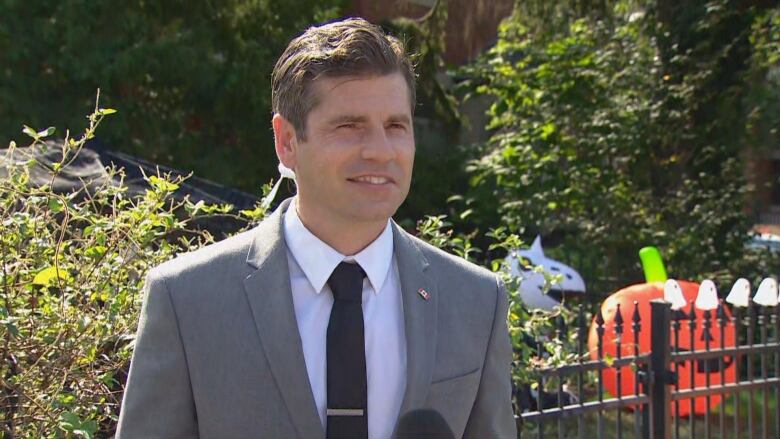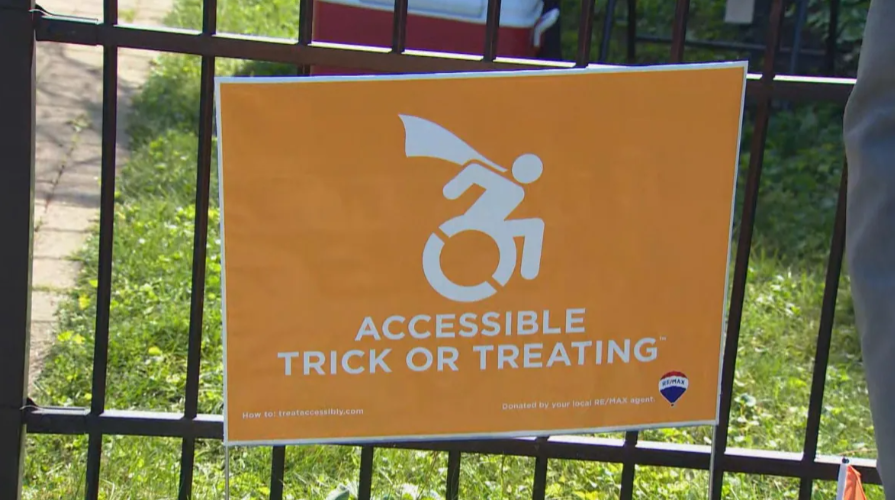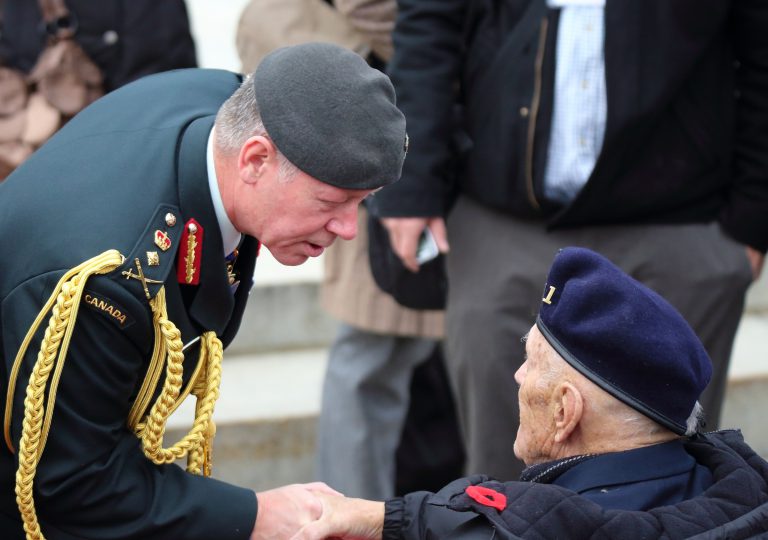Campaign gives children with disabilities chance to trick-or-treat without barriers
Inclusive event held in Toronto neighbourhood with COVID-19 safety rules in place

For nine-year-old Gabriel Nikolakakis, Halloween has not always been a holiday he could participate in easily because of his limited mobility, but one organization is helping to change that by creating accessible trick-or-treating neighbourhoods, one home at a time.
Treat Accessibly hosted an accessible trick-or-treat event Saturday for children with disabilities to offer a unique, barrier-free Halloween village.
Children from the Holland Bloorview Kids Rehabilitation Hospital joined others from Weston Village in on Queens Drive for the inclusive experience.
After Halloween was all but cancelled last year because of the pandemic, this year’s event was given the green light by public health officials with a limit on the number of people who could gather together.

For Gabriel, and the other children, it was a chance to dress up, collect candy, and celebrate a beloved holiday.
“It’s not scary enough for me yet,” said Gabriel. “But it feels amazing (to be back out).”
Dressed up as Harry Potter, Gabriel didn’t need the help of his parents to go house-to-house using his motorized wheelchair.
Instead, families handed out candy at the ends of their driveways — just one of the many small adjustments that are part of Trick Accessibly’s campaign.
Small adjustments, great results
“Usually it’s me carrying him or taking him to the door,” said Gabriel’s father, Stelios Nikolakakis. “We do whatever we can to make this experience for our family a positive one.”
“It’s beautiful to be a part of this [event].”
Gabriel’s mother, Fabiana Bacchini, said she was thrilled to see her son trick-or-treating again after a long year indoors.
“To be out here with all the kids, it’s an amazing experience,” she said. “We have to do what we can to keep schools open, and keep the kids interacting with each other.”
Gabriel is one of around 400,000 children living with a disability across Canada.
Treat Accessibly, founded in 2017, intended to remove barriers for children with disabilities during Halloween. The organization’s founder, Rich Padulo, said the experience is meant to support those children and their families.

“The beautiful part about Treat Accessibly is it’s a curbside scenario,” he said. “People get to trick or treat outside. No one’s going up to front doors, it makes it easier for neighbours, parents, and friends to feel more social outside, and also be COVID safe.”
He said making a home accessible for children with disabilities takes a few simple solutions. Handing out candy at the end of the driveway, for example, skips the need to use the stairs or cross a lawn.
Other things like keeping pets at a distance and removing strobe lights that may affect some children, are also among the organization’s recommendations.
Campaign expanding
“We’re very excited this year about the movement, and the growth,” Padulo said.
The campaign is expanding in Toronto, Brampton, Mississauga, Vaughan, and Caledon.
In 2019, 40,000 homes participated in the event. This year, 40,000 have already signed up, and the organization hopes to reach 100,000 across Canada by the end of the month.
Treat Accessibly gives homeowners a sign to place on their lawn indicating it is accessible for all.
“Dreams are coming true by creating the first ever accessible Halloween village,” Padulo said. “Our goal is by 2025 to have 400,000 homes participating.”

Advocates say it’s minor changes that can make the biggest differences.
“If we don’t think about those minor changes, our kids get left out,” said Christine Hill, manager of stakeholder engagement for the Holland Bloorview Foundation.
“We want to ensure a hopeful future for the kids,” she said. “We would love to see accessibility takeover every neighbourhood across the nation so kids can have the access they deserve.”

Kelsey Lecoure came to participate with her two-year-old daughter Amelia. Both mother and daughter have osteogenesis imperfecta, and the event gave them a chance to celebrate together.
“An event like this is so important,” she said. “[Amelia] uses a wheelchair, and I have my own disability, so trick or treating isn’t something we consider.”
“In the future, something like this is the only way we can go [trick or treating] as a family,” she said.
__________________________
Source: CBC News







